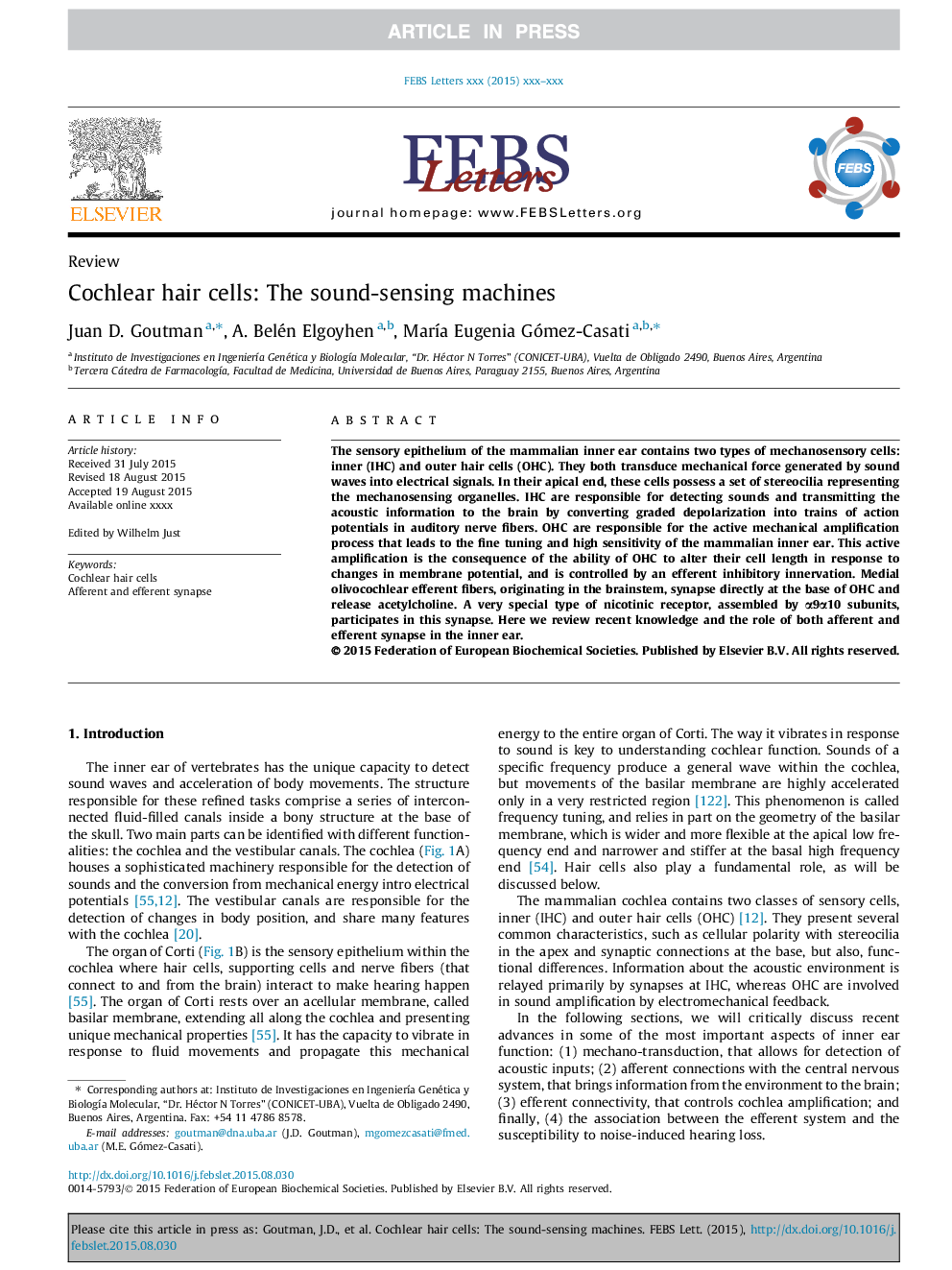| Article ID | Journal | Published Year | Pages | File Type |
|---|---|---|---|---|
| 10869826 | FEBS Letters | 2015 | 8 Pages |
Abstract
The sensory epithelium of the mammalian inner ear contains two types of mechanosensory cells: inner (IHC) and outer hair cells (OHC). They both transduce mechanical force generated by sound waves into electrical signals. In their apical end, these cells possess a set of stereocilia representing the mechanosensing organelles. IHC are responsible for detecting sounds and transmitting the acoustic information to the brain by converting graded depolarization into trains of action potentials in auditory nerve fibers. OHC are responsible for the active mechanical amplification process that leads to the fine tuning and high sensitivity of the mammalian inner ear. This active amplification is the consequence of the ability of OHC to alter their cell length in response to changes in membrane potential, and is controlled by an efferent inhibitory innervation. Medial olivocochlear efferent fibers, originating in the brainstem, synapse directly at the base of OHC and release acetylcholine. A very special type of nicotinic receptor, assembled by α9α10 subunits, participates in this synapse. Here we review recent knowledge and the role of both afferent and efferent synapse in the inner ear.
Keywords
Related Topics
Life Sciences
Agricultural and Biological Sciences
Plant Science
Authors
Juan D. Goutman, A. Belén Elgoyhen, MarÃa Eugenia Gómez-Casati,
